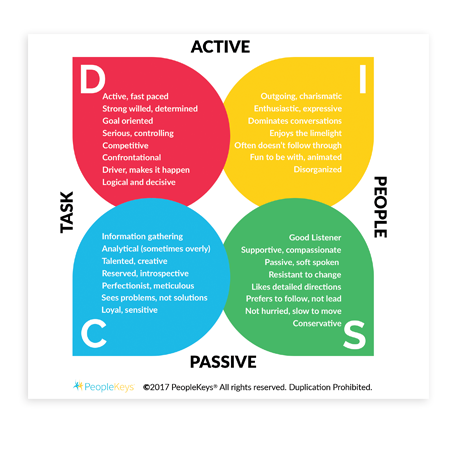Have you heard of digital sales funnels? For many of us, this is new terminology, and for those of us that have heard of digital sales funnels, it’s likely been outside of the context of the beauty industry.
Well today, Salon Owner and Industry Expert, Kati Whitledge, is here to share with you exactly what a digital sales funnel is and why they should become a regular part of our salon marketing strategy.
In addition to hosting the beloved Beyond The Technique podcast, Kati is the owner of the award-winning Be Inspired Salon located in Madison, Wisconsin, and the creative brain behind Meet Your Stylist, an innovative salon software system that matches potential clients with salon professionals based on services, lifestyle preferences, and personality metrics.
Kati is incredibly passionate about helping others in the industry develop their own success stories, and today she’s sharing how she incorporates digital sales funnels in her own salon marketing and giving you some examples of how to implement these techniques in your beauty business in order to help you capture those leads.
So, What Exactly Is a Digital Sales Funnel?
A sales funnel is basically how a business or brand generates and captures leads. A digital sales funnel is how businesses generate and capture leads online, most often on social media.
Imagine an actual funnel, and at the top of that funnel, the rim if you will, is “awareness”. This is the first step in even creating a lead because people have to know that your brand exists, they have to be aware of your beauty business before anything else.
Once you’ve established some awareness, you’re able to direct your leads through the actual funnel and this is when it becomes kind of a slippery slope (in a good way!). It’s the progression from knowing about your business or your brand, to becoming a client of your business, to becoming a repeat client with established loyalty to your brand.
So, the precursor is getting your brand out there, then you have to create interest. You need to generate some hype around your brand and get people interested in the products and services you offer. If you’re successful, your leads will slide right down said slippery slope without even realizing it.
First they’ll measure whether or not your brand aligns with their values. If the answer is yes, they’ll make the decision to do business with you. Afterwards, they’ll weigh their experience and decide how likely they are to come back. A digital sales funnel basically goes from that initial awareness to ultimately becoming a long-term client.
Where Do You Start?
First thing’s first, you need to measure your level of awareness. This is especially important for new salons, because if your target market doesn’t even know you exist, they’re not going to fall into your funnel.
If you’re looking to build awareness online quickly, Kati suggests putting a few dollars behind a paid ad. More established salon businesses can even have massive success with organic sales funnels because they already have a strong presence in the marketplace, but new salons can seriously benefit from putting out these kinds of social promotions. She promises that the return on your investment will be huge as long as you know your demographics.
If you’re already pretty established within your community, you might be able to skip the “awareness” step. Of course, a little refresher never hurts, but if you’re satisfied with your level of brand awareness, you can jump right in to the “generating interest” phase.
Find Your Niche and Market the Crap Out of It
The best way to create some hype around your brand is to figure out what makes you unique. Kati encourages all salon owners to ask themselves, “What sets my beauty business apart from the rest?”
For example, Be Inspired Salon is known for being one of the only curly concept salons in the greater Madison area. If any of you have naturally textured hair, you know that when you find that one stylist that can manage your curls, you stick with them! So, Kati and her salon team use this to their advantage with posts that include verbiage like:
“Hey gorgeous, have you struggled to find a stylist who understands your curls? We totally understand, and we’re here to help…”
So, you’re creating this interest around the fact that you have something special, and this could be the determining factor for somebody coming in.
Next, You’ve Got to Get People to Engage
Now, the whole point of a sales funnel is to engage, attract and convert people into first-time buyers who become lifelong clients. So, how can you get them to engage with your brand?
Sales funnels play perfectly in the sandbox with value ladders, which is it’s own topic that we’ll have to dive into another day, but basically, a great way to get your potential clients to engage with your brand for the first time is to offer them something totally complementary.
This is why social posts that promote contests and giveaways are so successful, because you’ve generated enough interest to be able to capture a client’s information but at little to no cost to them. Even if they don’t win the giveaway, they’re now following your brand on social and maybe they even had to enter their email address so you’re able to continue to market to them across platforms and increase their level of brand awareness.
Now, the Decision is In Their Hands
Once you’ve taken your leads through that portion of the funnel, the rest is riding on their shoulders. But as previously mentioned, it’s a slippery slope. If you were able to snag their attention once, they just might decide to do business with you anyway, even though they didn’t win the complimentary service.
Pretty cool--right?!
To listen to the podcast that inspired this blog, check out Phorest Salon Software’s interview with our very own Host and CEO Kati Whitledge.
P.S. If you’re hungry for more information on digital sales funnels, boy do we have a treat for you! You can go back and watch our webinar, “Mastering Sales Through Human Instinct” on Youtube for free! Kati gives real life examples of how you can implement digital sales funnels directly into the marketing you’re already doing--you can’t miss it!







